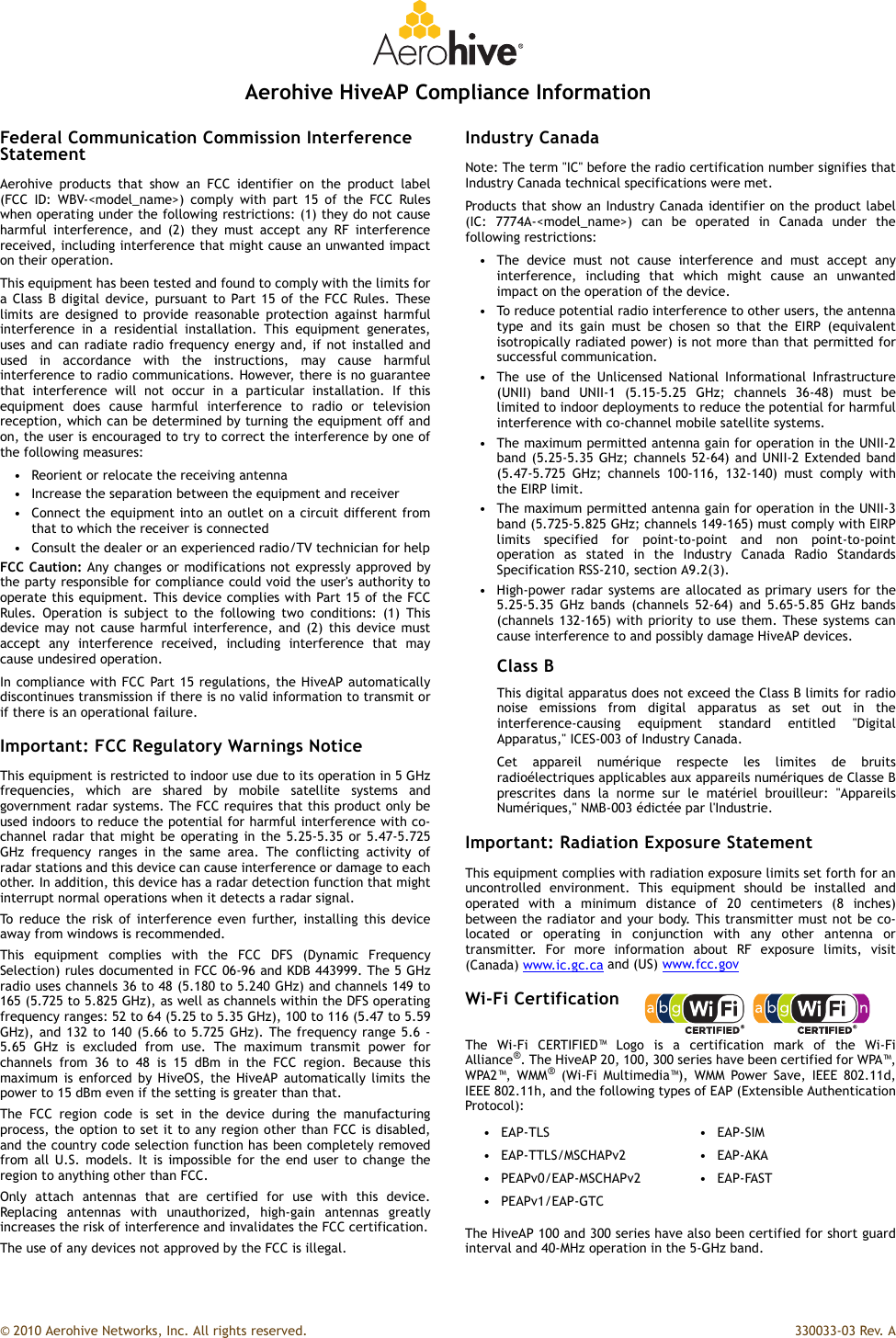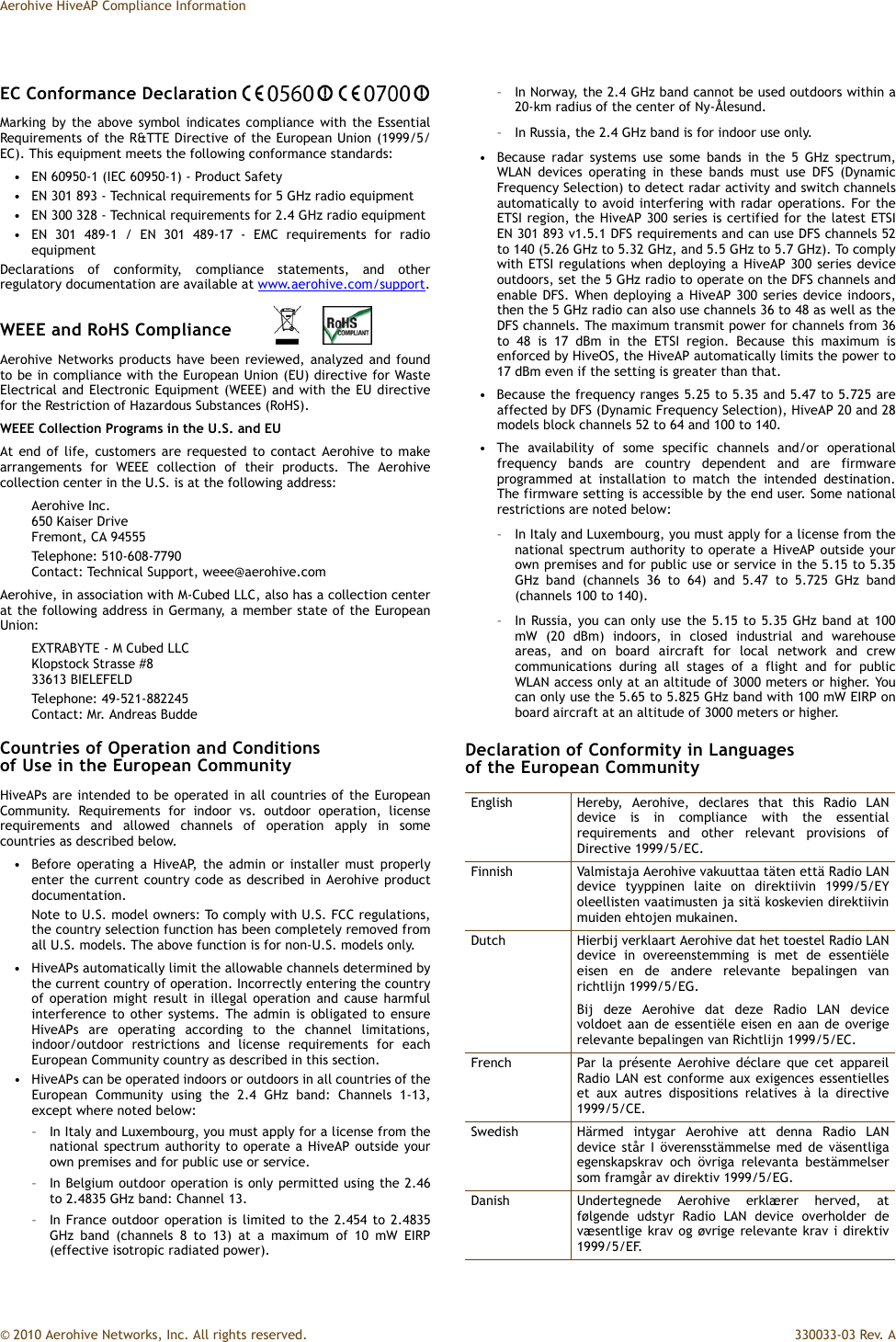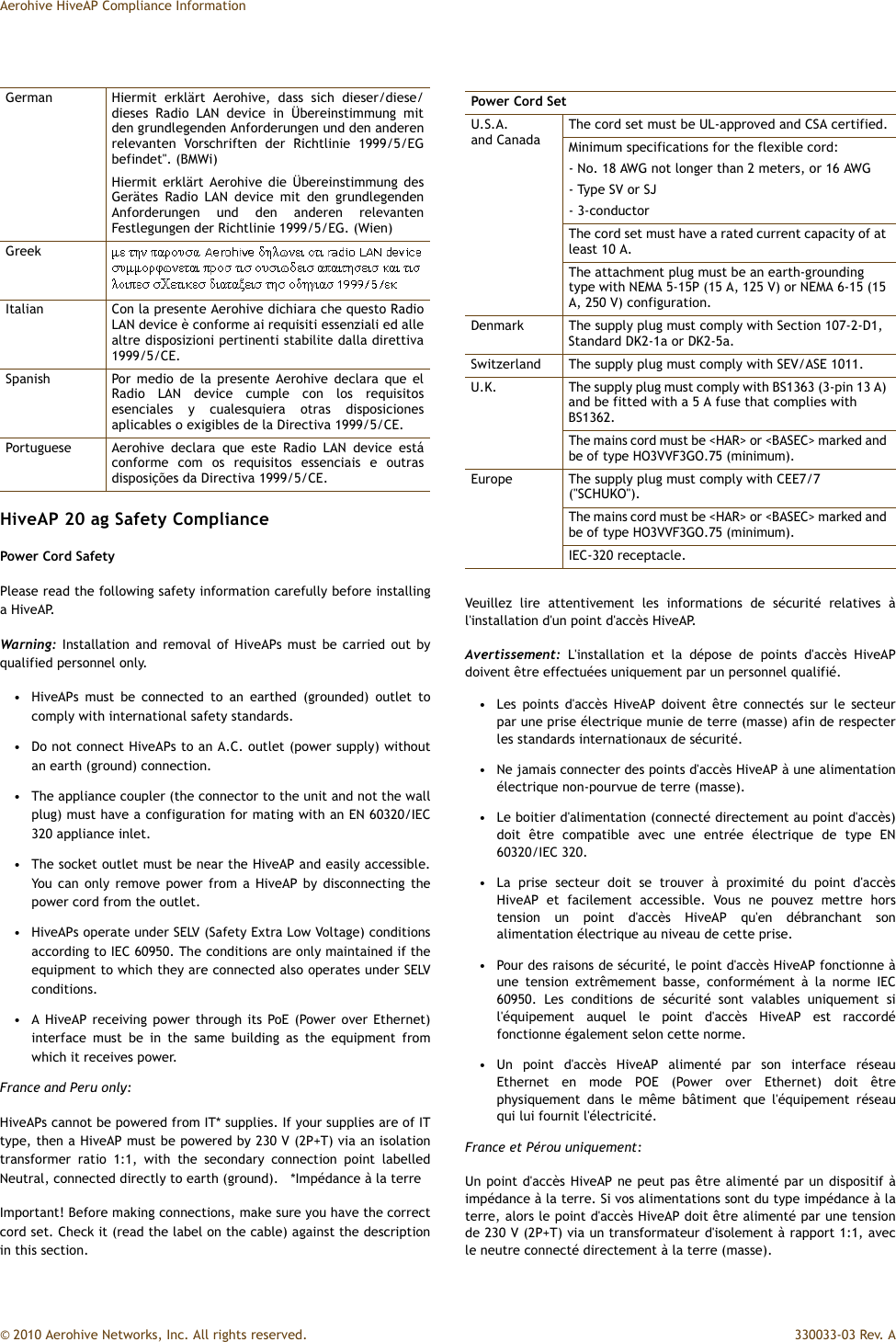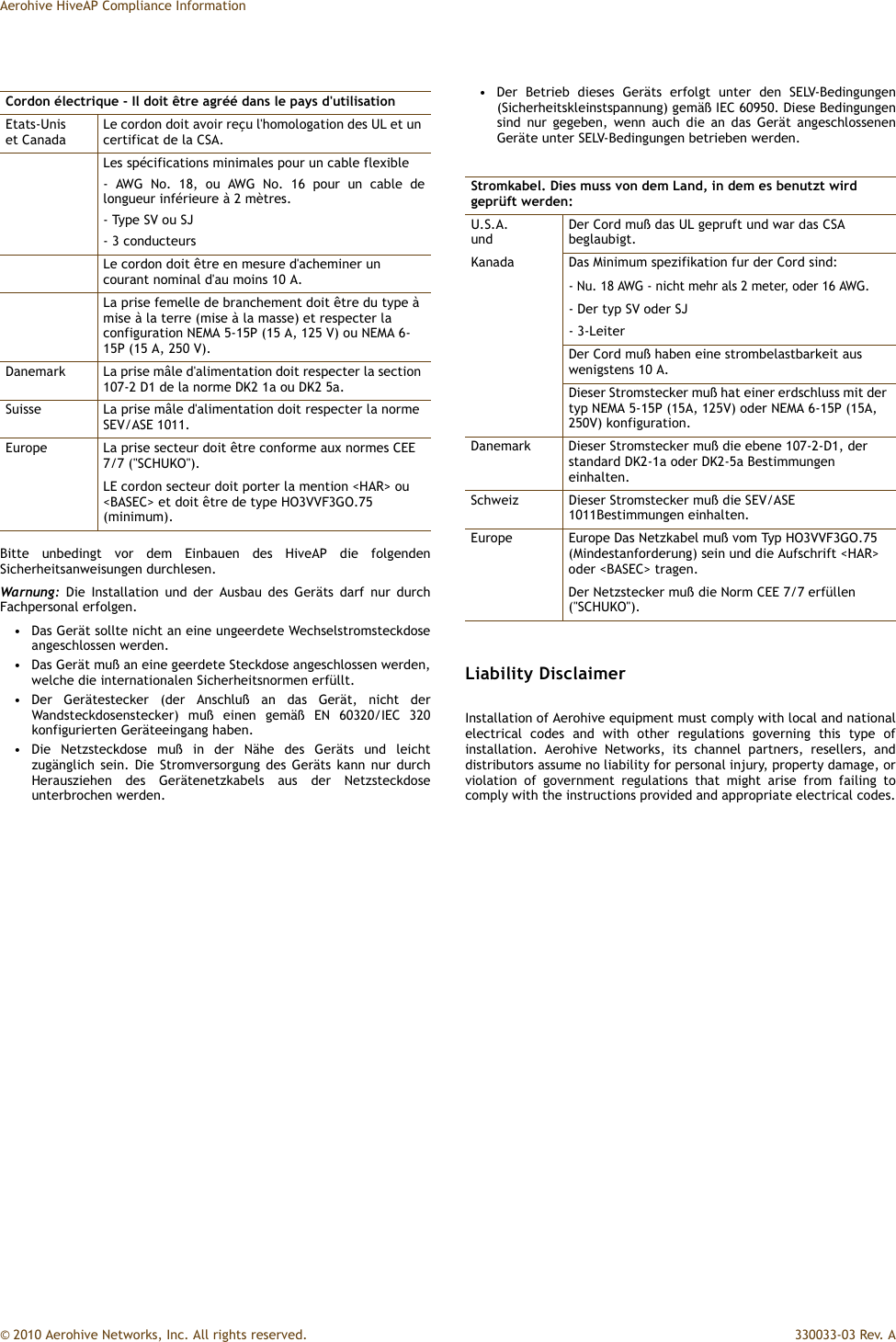Aerohive Networks HIVEAP320DFS 802.11a/b/g/n access point User Manual Aerohive HiveAP Compliance Information
Aerohive Networks, Inc. 802.11a/b/g/n access point Aerohive HiveAP Compliance Information
Contents
- 1. user manual
- 2. User manual
- 3. Manual
Manual



